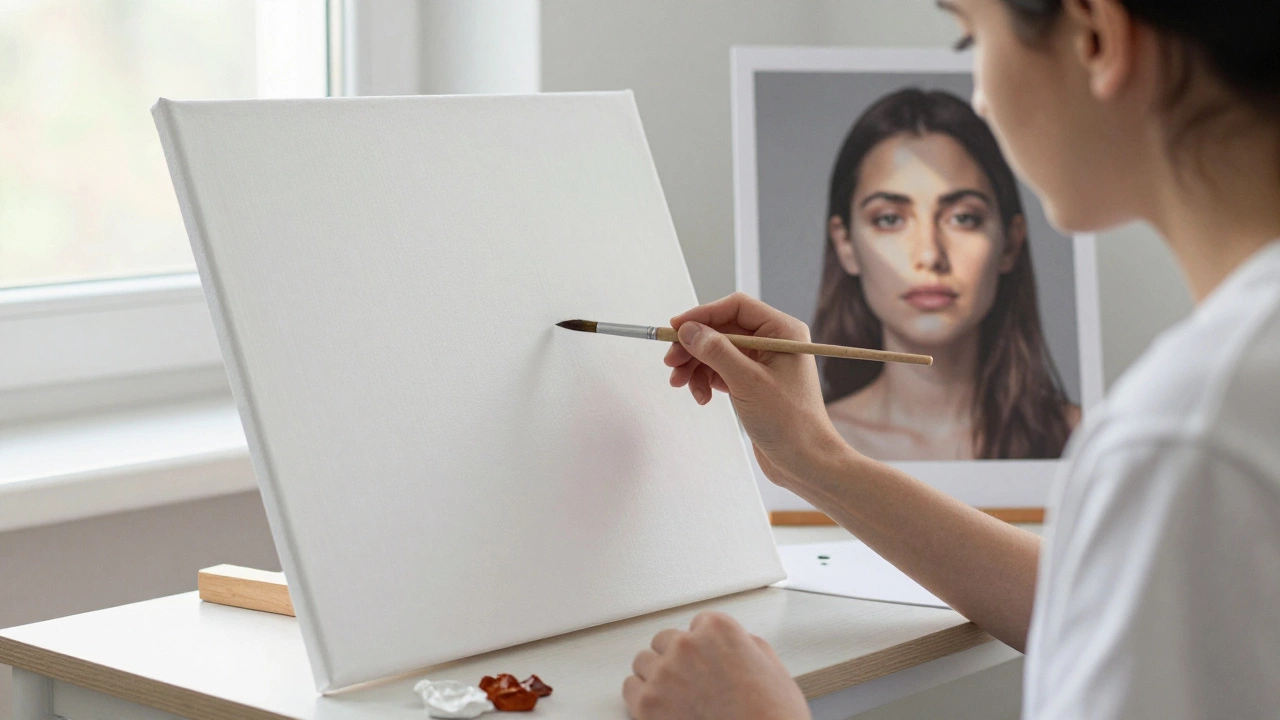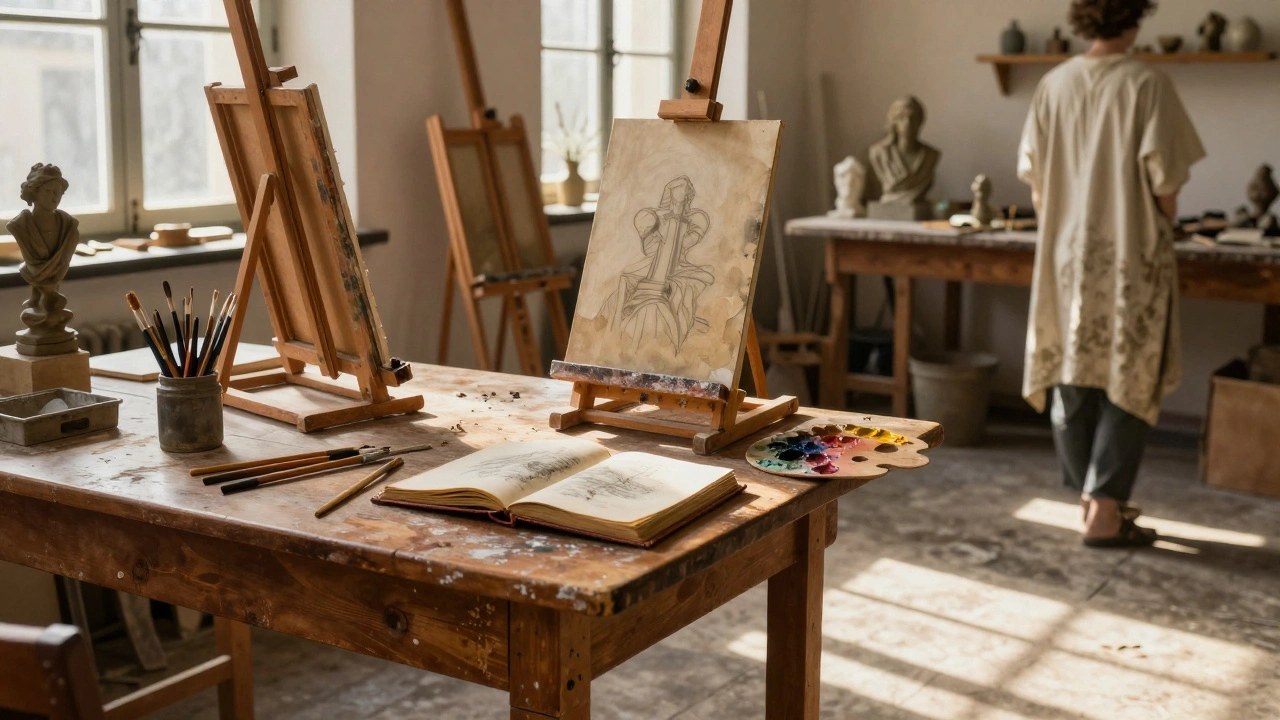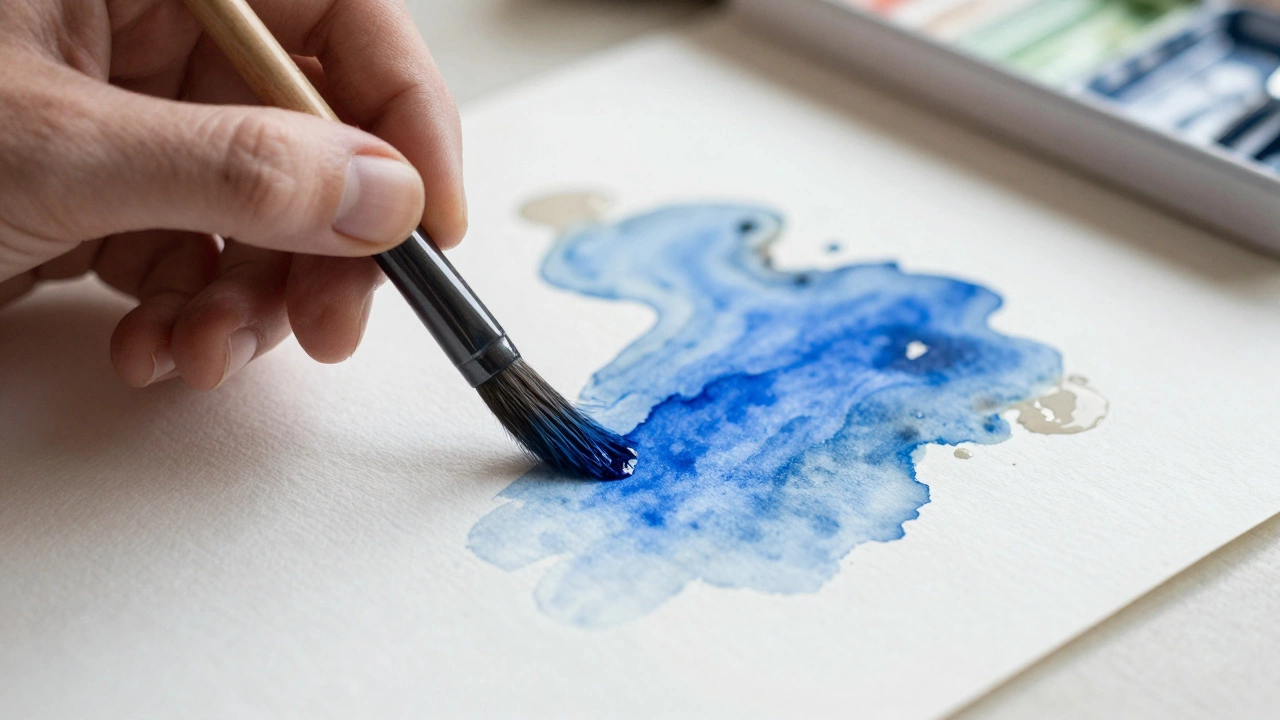Sculpture, with its centuries-old tradition, captures human creativity in three-dimensional form. Artisans forge their visions into tangible works that speak volumes through silence. With each curve and angle, sculptors reveal stories, emotions, and cultural narratives that resonate across time and space.
Understanding sculpture means delving beyond the surface. The material used, whether it is marble, clay, or metal, each brings its own set of challenges and aesthetics, adding distinct layers of meaning to a piece. Technique, honed through years of practice, allows artists to breathe life into their visions, infusing them with soul and authenticity.
Emotional depth is as crucial as the physical form, offering viewers a window into the artist's inner world. Textures invite exploration, while balance and proportion create harmony or invoke tension. Each sculpture tells a story, and by becoming a part of it, viewers can connect on a deeper level, enriching their understanding and appreciation of art itself.
- Exploring the Fundamentals of Sculpture
- The Role of Material and Technique
- Emotion and Storytelling in Sculpture
- The Importance of Form and Texture
- Cultural Significance of Sculpture
- Tips for Appreciating Sculpture Art
Exploring the Fundamentals of Sculpture
The art of sculpture has been an intrinsic part of human history, representing a fusion of creativity, physicality, and technical mastery. Unlike painting or drawing, which operate primarily on two-dimensional surfaces, sculpture exists in the round, offering a tactile experience that engages both the viewer’s sight and touch. At its core, sculpture demands a unique understanding of volume, space, and form, crucial elements that define the mastery of this art.
Sculptors select materials with great care, each choice impacting the final piece both aesthetically and structurally. Bronze has been prized for its durability and ability to capture fine detail, while marble offers a timeless elegance favored by masters like Michelangelo, whose "David" remains a testament to the beauty of marble work. Clay, stone, and contemporary materials such as plastics and resins also play significant roles, each offering its own set of expressive possibilities and challenges.
Technique and tools are just as significant in sculpture creation. Traditional tools like chisels and mallets have given birth to masterpieces, yet modern technology has expanded the sculptor's toolbox to include lasers and 3D printers. This evolution allows sculptors to explore complex forms and structures that were once impossible to achieve. The study of balance and proportion remains a cornerstone, as achieving harmony in sculpture is not just a visual feat but a physical one as well. It was Auguste Rodin who said, "The artist must create a spark before he can make a fire and before art is born, the artist must be ready to be consumed by the fire of his own creation."
The process of creation, often lengthy and laborious, is a testament to the sculptor’s dedication. Sculpting requires patience and a deep understanding of one’s medium, as a single misstep can transform the embedded potential into irretrievable loss. Yet, these challenges reward the artist with a singular opportunity to shape the tangible world, bridging imagination with reality in a dynamic interplay. Aspiring sculptors often begin with modeling in pliant materials like clay or wax, which allows for exploration and mistakes without dire consequence, laying the groundwork for more durable pieces later on.
The fundamentals of sculpture also delve into the creation of empathy and storytelling through form. Human figures, animals, and abstract constructs can embody movement, emotion, and a narrative capturing both the artist’s intent and the cultural context of the era. From religious idols that command reverence to abstract forms that provoke thought and discussion, each sculpture tells its own story. This communion between the tangible and intangible is what renders sculpture a living art form, evolving as perceptions and technologies advance.
Sculpture challenges perceptions with its three-dimensional presence. The interaction with space is not mere happenstance but a deliberate dialogue between object and environment. Sculptors must visualize their work within its physical context, considering viewpoints and the way light will play upon surfaces. It is this multidimensionality that sets sculpture apart, commanding presence whether in the serene confines of a gallery or amid bustling urban landscapes.
The Role of Material and Technique
The selection of material stands at the very heart of sculpture art, holding a profound influence over both the creative process and the finished piece's impact. Artists draw upon a diverse range of media, each bringing a unique texture, durability, and resonance to the art form. From the cool, unyielding marble favored by Renaissance masters to the pliable warmth of clay that whispers of ancient civilizations, materials are much more than mere tools—they are partners in creation. Today, many artists are venturing into using recycled or unconventional materials, making bold statements about sustainability and modern life. This diversification has expanded the horizons of what sculpture can represent, offering audiences unexpected sensory experiences.
Marble, for instance, coveted for its fine grain and luminescent quality, has allowed artists like Michelangelo to attain unmatched levels of detail and intricacy. The stone’s resistance to elements enables a longevity that tells historical and cultural tales across eons. In contrast, bronze provides an incredible flexibility with its ability to capture dynamic movement once expertly cast. This metal has been utilized from ancient Greece to modern times, enabling creations that depict everything from mythological deities to abstract forms. Each choice of material not only defines the practical aspects of the work but also contributes to its thematic depth, playing a pivotal role in how the art communicates with the viewer.
Mastering the techniques appropriate to each material is akin to learning a new language. A sculptor’s touch must adapt to the specific demands and possibilities of each medium. Carving, chiseling, casting, and modeling require differing skill sets and offer varied expressive potentials. The chisel must bite into stone with precision, demanding a steady hand and a vision that sees form within the block. Meanwhile, the malleability of clay invites manipulation and reformation, allowing artists to continuously evolve their pieces. These techniques aren’t just manual practices; they embody a sculptor's emotional dialogue with their medium, creating a tangible interplay that breathes life into their work.
"Every block of stone has a statue inside it, and it is the task of the sculptor to discover it," said Michelangelo, capturing the essence of this transformative process.
As techniques evolve, new technologies are being embraced to push boundaries further still. Digital modeling and 3D printing have introduced revolutionary changes, enabling unprecedented complexity and precision. Artists can now experiment with form and structure in virtual spaces, crafting designs that were once thought impossible to realize. This integration of technology challenges traditional notions of creativity, urging artists to blend the tactile with the digital, enriching their artistic vocabulary. Emphasizing technique and material as inseparable aspects of sculpture, future creations promise to continue captivating and challenging perceptions, reinforcing art’s enduring role as a bridge between the tangible world and the realm of ideas.

Emotion and Storytelling in Sculpture
The profound impact of sculpture on the human psyche can hardly be overstated. It is an art form that transcends mere aesthetic appeal, delving deep into the realm of human emotion and narrative. At its heart, sculpture is an endeavor to capture the intangible aspects of the human experience—our joys, sorrows, triumphs, and tragedies—within a static form. The power of sculpture to communicate emotion can be seen in the soft curves of Rodin's The Kiss, where the intimate embrace of two lovers is immortalized. Similarly, Michelangelo's Pietà captures a moment of deep sorrow and maternal tenderness, telling a story that transcends cultural and temporal boundaries.
The narrative potential of sculpture is significant. Artists often imbue their works with stories that are both personal and universal, encouraging viewers to delve into the underlying themes and messages. Take, for instance, the Terracotta Army of China. Each soldier, carved with unique features, speaks to the individuality of the warriors who were honored, as well as to the grandeur of Emperor Qin Shi Huang’s vision for the afterlife. The sculptures tell tales of honor, duty, and the human desire for immortality. This storytelling aspect is crucial; as Auguste Rodin once stated, "The artist must create a spark before he can make a fire and before art is born, the artist must be ready to be consumed by the fire of his own creation."
In the realm of abstracts, the narrative may not be as explicit but is equally potent. Henry Moore's elongated forms, for example, are evocative with their suggestion of human and natural forms, emphasizing the relationship between human figures and the landscape. This storytelling through abstract form invites audiences to interpret the piece through their own emotional and intellectual lenses. This engagement between the viewer and the sculpture is what breathes life into the narrative, fostering an interactive dialogue between the art and its audience.
A component that enhances the emotional and narrative depth of sculpture is its capacity to evoke a tactile response. The textures employed by sculptors can convey different emotions or contexts. Smooth marble might suggest grace and purity, while rough-hewn stone can evoke a sense of raw strength or ancient enduring presence. The interplay of light and shadow across these surfaces adds another layer to the sculpture's emotive language, subtly directing the viewer's emotional journey.
To fully appreciate and understand the tapestry of emotions and stories woven into a sculpture, it often helps to explore the broader context of its creation. Historically, sculptures have been commissioned to commemorate victories, celebrate leaders, or serve as focal points of spiritual reflection. The socio-political and cultural contexts of these artworks add depth to their stories, allowing them to serve as historical documents as much as artistic expressions. For instance, in Australia, Linde Ivimey's anthropomorphic sculptures often reflect personal stories and historical narratives, blending the artist's life experiences with broader cultural motifs.
When we speak of sculpture, it is not just the form or technique that binds the art together, but its capacity to reach into the depths of human emotion and allow the stories ingrained within it to unfold. Sculpture, in its varied forms, serves as a poignant reminder of our capacity for empathy and connection, as it narrates the stories that unite us distinctively through its static, yet profoundly dynamic presence.
The Importance of Form and Texture
In the vibrant realm of sculpture art, form and texture play pivotal roles in defining the character and emotional impact of a piece. A sculpture is not just about the shape it takes; it is an interplay of contours and surfaces, of light and shadow, that captivates the viewer's eye. The form provides the skeleton of the artwork, dictating its outlines and the space it occupies. It establishes the basic structure upon which the art stands, guiding the observer's gaze across its dimensions and enabling a visceral understanding of the artwork's essence.
Texture, on the other hand, introduces a tactile element to sculpture, inviting interaction both visually and physically. It brings a layer of complexity that can transform a simple piece into something profoundly expressive. Whether it's the smooth polish of a marble statue or the rough edges of a clay figure, texture tells its own story. It can echo the natural grain of wood or the intricacy of carved details, creating a sensory experience that encourages viewers to trace these patterns with their eyes or fingertips.
Historically, the ancient Greeks mastered the art of form and texture, seen in the intricate detailing of their statues. Their emphasis on realism and idealized human forms highlighted how texture could complement form, emphasizing muscle definition and lifelike features. Michelangelo's "David" remains a magnificent testament to this interplay, where the texture of the carved marble mimics the softness of human skin, yet resolutely captures the tension within the poised figure.
Experts believe that the textural qualities of a sculpture can significantly affect its psychological impact. A highly textured surface often conveys chaos or organic growth, leading to feelings of unrest or dynamism, while smoother, seamless textures might evoke serenity and clarity. This dichotomy between form and texture often reflects the dual nature of human experience, with life's tumultuous and calm moments captured within the sculptural medium. According to a notable quote from acclaimed sculptor Henry Moore, "Sculpture should always have a sense of growth and movement, and texture is paramount to that impression."
The manipulation of light and shadow is another aspect where form and texture are crucial. As natural light moves across a sculpture, it accentuates the depth and dimension of its surface, altering the perception of form and bringing unexpected details to prominence. This dynamic interaction between light and texture is where sculpture art is truly alive, constantly evolving as the light shifts, much like the ephemeral qualities of nature itself.
For any art enthusiast or aspiring sculptor, understanding form and texture isn't just about mastering technique but about appreciating how these elements serve as vessels for expression and storytelling. Developing a keen eye for these details can enhance one's experience with art, turning each viewing into a conversation between observer and object, revealing the soul of the sculptor intertwined within the piece. Thus, in sculpture, form and texture are not merely aspects of design; they are intrinsic elements that enrich the narrative, creating art that is as compelling and intricate as life itself.

Cultural Significance of Sculpture
The role of sculpture within cultures across the globe offers a reflection of the societies that create them. Throughout history, sculptures have been a powerful medium for expressing religious beliefs, political ideologies, and societal values. In ancient Egypt, for instance, sculptures were intrinsically tied to religious practices and were primarily used to represent deities and pharaohs in a way that honored and deified them. This practice was not only about religious reverence but also a method for capturing and preserving the essence of the rulers and gods for posterity. Such art demonstrated the society's values, beliefs, and priorities, woven into every carved surface.
In more modern contexts, sculptures continue to serve as potent symbols of cultural identity and heritage. Consider the monumental Christ the Redeemer in Brazil, which stands not just as a religious icon but as a symbol of peace—all while contributing significantly to Rio de Janeiro's cultural landscape and identity. Around the world, numerous indigenous communities use sculpture as a means to convey stories and traditions, maintaining an oral history that informs and educates future generations. The Australian Aboriginal peoples, for example, create carvings and sculptures that offer insights into their spirituality, law, and connection to the land—ancient tales carved into wood or stone that keep their culture alive.
Moreover, the art of sculpture bridges societal gaps, providing a tangible link to our ancestors. It is not just the craftsmanship that is passed down, but the intricate knowledge and stories encoded within the art. This continuity allows each generation to connect with their past, experience the emotions and visions of their forebears, and redefine them in contemporary contexts. Public sculptures in urban environments can act as rallying points for community identities, often becoming symbols for collective ideologies or milestones of historical events.
The cultural impact of sculptures is often intensified by their durability and public visibility. Unlike paintings, sculptures occupy space in our physical world, inviting interaction and contemplation from their audience. They assert a commanding presence that demands attention, discussion, and interpretation. In many parts of the world, sculptures are also evident in funerary art, providing insights into the historical significance of death, remembrance, and the celebrations of life that transcend generations. The Terracotta Army of China's first emperor, Qin Shi Huang, is an illustrious example—intended to protect him in the afterlife, these sculptures serve as a testament to the emperor's influence and the intricate craftsmanship of the era.
"Art must be an integral part of life, for social and cultural continuity," said a noted historian, emphasizing the importance of integrating creativity and expression within societal constructs. Sculptures offer not only a glimpse into the aesthetics of an era but also into the very ethos of the societies that crafted them, making them invaluable cultural treasures to be preserved and cherished.
Through the curious eyes of sculpture, we glimpse the kaleidoscope of human civilization—each piece encapsulates a narrative, a fragment of human existence, offering a timeless dialogue that continues to inspire, challenge, and unite us in a shared human experience. Whether in the temples of ancient India, the public squares of Italy, or the bustling streets of New York City, sculptures are vessels of cultural expression, silently yet eloquently narrating the saga of human aspirations and achievements.
Tips for Appreciating Sculpture Art
Sculpture art, with its intricate forms and tactile nature, offers a unique contemplative experience. To truly appreciate a sculpture, begin by immersing yourself in its physical presence. Stand back to observe the entire piece, noting how it occupies space and interacts with its environment. Change your vantage point to uncover different aspects and catch how light plays across the surfaces. This movement and interaction can turn a casual viewing into a profound exploration of artistic intention.
Pay attention to the material used, as it can reveal much about the artist’s intent. For instance, the cold, hard surface of a bronze sculpture might convey permanence, strength, or historical significance. In contrast, more delicate materials like ceramics can suggest fragility or intimacy. Understanding these material choices can deepen your appreciation of the thematic elements the artist wished to express. As art critic Robert Hughes once remarked,
"The weight and texture of the medium used in sculpture speaks volumes in the language of art."
Look closely at the textures of the sculpture. Feel if they are smooth or rugged, detailed or abstract. These tactile details often invite touching, when allowed, as a way to connect physically and emotionally with the piece. This sensory engagement can provide insights into the labor and craftsmanship invested in creating the work. Consider what the textures suggest about movement, emotion, or the artist's personal expression. Such tactile exploration can lead you to new interpretations that are unique to your personal experience with the art.
Consider the cultural and symbolic meaning embedded in the sculpture. Many works stem from rich historical and cultural backgrounds, reflecting societal values or shared human experiences. Research the context in which the sculpture was created. Ask yourself about the historical period it represents or what social commentaries it might be making. This cultural backdrop can transform your encounter with the piece, offering a deeper understanding of its significance. Sometimes, art mirrors contemporary issues, contributing to a broader discourse about the world we live in. Embracing this viewpoint allows you to appreciate the sculpture not just as a physical entity, but as a story bound in shape and form.
To enhance your appreciation, engage with additional resources. Museums and galleries often provide written descriptions, audio guides, or guided tours that interpret and discuss artworks. Learning about the artist’s biography, influences, and the specific techniques they used can provide added dimensions to your understanding. Each sculpture holds a narrative, sometimes personal, sometimes universal. Investigating these stories can be as captivating as viewing the sculpture itself, offering layers of intrigue and knowledge.
Lastly, be patient with the process of appreciation and open to how the artwork affects you personally. Your background, emotions, and experiences shape how you perceive art. Allow yourself the flexibility to have a unique reaction, uninfluenced by conventional critiques. Artistic appreciation is a personal journey, and sculptures, with their tangible presence, provide an ideal medium for this introspective exploration. Embrace each moment of your encounter with the sculpture, letting it speak to you beyond formal analysis to engage with your inner being.





